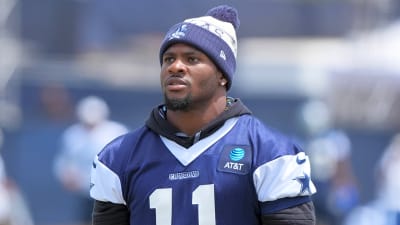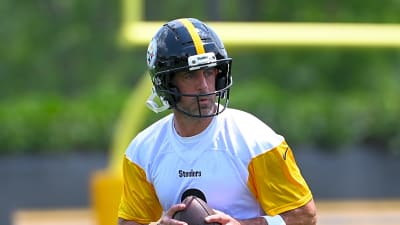Super Bowl 59 will put the NFL referees under an immense amount of pressure to get calls right. The Kansas City Chiefs and Philadelphia Eagles square off in the 2025 NFL Super Bowl, and you need to know what some of the key penalty calls are.
Pass interference is a crucial and frequently debated rule in football that relates to maintaining fair play during passing situations. Grasping this rule is essential for players, coaches, and fans alike, as it can significantly influence the result of a play or even determine the outcome of a game.
Here's everything you need to know about pass interference.
What is Pass Interference?
Pass interference occurs when a defensive player makes illegal contact with a receiver while the ball is in the air, hindering the receiver’s chance to catch the pass. This interference can include actions such as pushing or pulling, which disrupt the receiver's ability to catch or reach for the ball. Unlike illegal contact, pass interference can take place anywhere on the field and is penalized once the ball has been thrown.
Offensive pass interference can also be called if the receiver engages in similar actions to impede the defender's ability to make a play on the ball, although such instances are less frequent.
What is Defensive Pass Interference?
Defensive pass interference rules occur when a defensive player engages in certain actions. First, if a defensive player illegally contacts the intended receiver before the ball arrives, it is considered a violation that impedes the receiver's chance to make the catch.
This was called DPI on fourth and 16 to give the #Chiefs a first down.
— Ari Meirov (@MySportsUpdate) September 15, 2024
Sure looks like the defender got there early. Thoughts?pic.twitter.com/UBIXgHs7Mi
Defensive pass interference is called when a player focuses on the receiver rather than attempting to play the ball. This occurs when the defender cuts off the receiver's path or faces them, extending their arms without trying to intercept or deflect the pass.
Lastly, if a defensive player restricts the receiver's movement without making an effort to catch, intercept, or bat the ball, it may also be deemed defensive pass interference, regardless of whether the pass is catchable.
What is Offensive Pass Interference?
Offensive pass interference takes place when an offensive player engages in blocking downfield before the ball is touched, particularly when the pass has traveled beyond the line of scrimmage.
It can also occur when an offensive player initiates contact with a defender in order to create separation while attempting to catch a pass.
The receiver extends his arm and creates separation while the ball is in the air, therefore it is offensive pass interference. – AL#SBLIV pic.twitter.com/hxAvggDqhS
— NFL Officiating (@NFLOfficiating) February 3, 2020
What is the penalty for Pass Interference?
In the NFL, defensive pass interference is treated as a spot foul, which means the penalty is applied at the exact location where the interference occurred. This can lead to significant yardage gains for the offense, especially on long passes.
If the foul takes place in the end zone, the ball is moved to the one-yard line, and the offense gets an automatic first down.
On the other hand, offensive pass interference incurs a 10-yard penalty from the line of scrimmage and does not grant an automatic first down.
What is the difference between Pass Interference and Illegal Contact?
Illegal contact and pass interference are separate penalties in football, each with its own criteria, consequences, and effects on the game. Illegal contact takes place before the ball is thrown and incurs a five-yard penalty along with an automatic first down.
In contrast, pass interference occurs after the ball has been thrown and can lead to significant yardage gains for the offense because it is a spot foul penalty.
More must-reads:
- Broncos work not done after extending standout DE Zach Allen
- Browns held Shedeur Sanders out of team drill due to arm injury
- The 'NFL mascot names' quiz
Breaking News
Trending News
Customize Your Newsletter
 +
+
Get the latest news and rumors, customized to your favorite sports and teams. Emailed daily. Always free!








